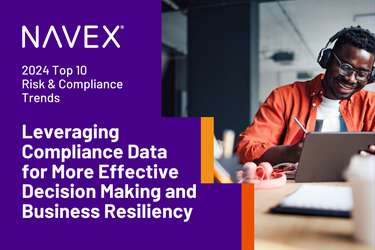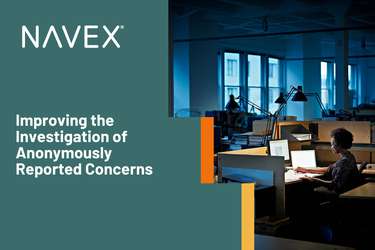"Do my employees know about reporting channels they can use to ask questions or report misconduct—and are they using them?"
"Am I missing trends that point to ethics and compliance risks in my organization?"
"Are we cultivating an organizational culture in which employees feel free to ask questions and report issues without fear of retaliation?"
Comparing internal hotline data year over year is one important way to help answer these and many other questions about your compliance program effectiveness. But getting a broader perspective on how your program’s performance matches up to industry norms is also critical.
In our latest hotline benchmark report, we’ve analyzed anonymized data from more than 860,000 reports captured in our EthicsPoint Incident Management software to help you answer your toughest program questions—and reveal how you stack up against your peers.
On Wednesday, March 16, we’ll release the report findings during our free webinar. (All webinar registrants will also receive a complimentary copy of the full benchmark report.) During the webinar, NAVEX Global's CCO Carrie Penman and I will also provide practical recommendations that will help you fully leverage the findings in your own program.
As a preview, here are a few of the key findings from this year’s report:
- Anonymous Substantiation Rate Holds Steady: Despite the potential bias against anonymous reporters among some leaders and investigators, the substantiation rate for anonymous reports has stayed at 36 percent for the last three years. This demonstrates that these reports are valuable and credible.
- Losing Ground on Anonymous Reporter Follow-Up Rates: When an individual reports an ethics and compliance concern anonymously, their initial report may not include all of the information investigators need to follow up. That’s why organizations need to make sure that anonymous reporters are aware of the need to check back in on their report (generally using a code they’ve been given for doing so) to see if they need to provide additional information. The percentage of anonymous reporters who follow up has hovered around the 30 percent mark since 2011. In 2014, the rate went up to its highest level since 2011, 33 percent, but in 2015, the number was back down to 30 percent.
- More Reporters are Using Web Forms to Report Issues: Looking at the data from 2013 forward shows a trend toward higher level of web reporting versus hotline reporting. In 2015, 24 percent of reporters used the web, up from 23 percent in 2014 and 20 percent in 2013. Of the reporting methods outside hotlines and web forms, the top three reporting channels were email, mail and in-person conversations.








